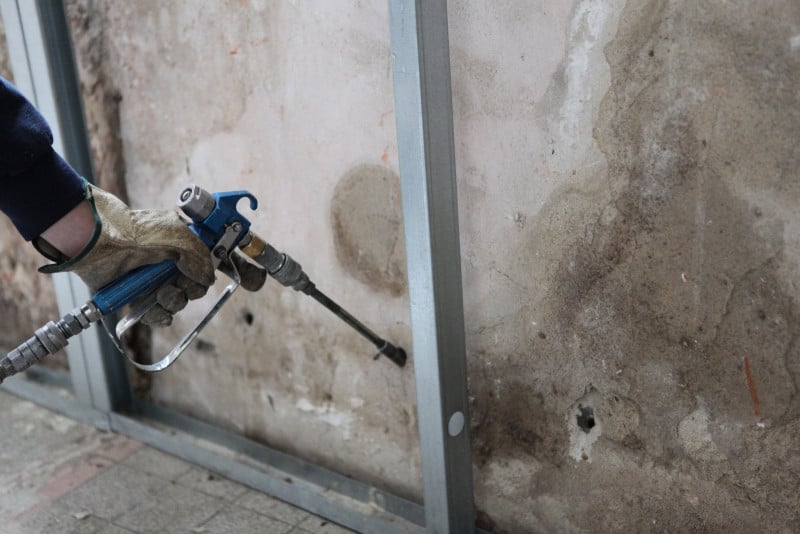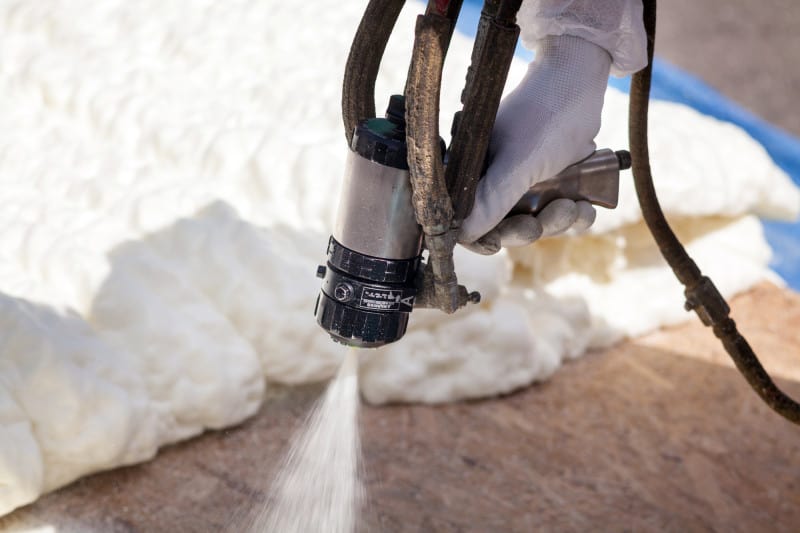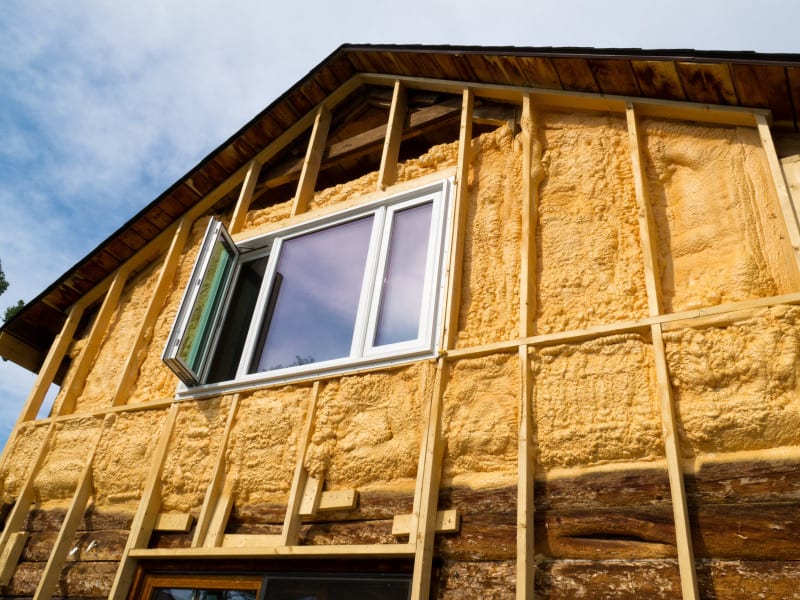Spray foam insulation is a popular choice for many homeowners and business owners due to its ability to provide superior insulation.
But can mold grow on spray foam insulation?
The short answer is yes, mold can grow on spray foam insulation if there is moisture present. Spray foam insulation is not mold-resistant, and if it gets wet, mold can grow on it.
The idea of mold growing in our homes is scary, so it’s natural to wonder if it could be hiding away in our walls and ceilings.
Unfortunately, some types of insulation are more prone to mold growth than others–and spray foam insulation is no exception.
We’ll look at why this type of insulation is particularly vulnerable to mold growth and what steps you can take to prevent it from happening in your space.
By the end of this article, you will have a better understanding of why mold can grow on spray foam insulation and how you can minimize the risk of it happening in your home or business.
You’ll also gain peace of mind knowing that by taking the necessary precautions, you are protecting yourself from potential health risks associated with mold exposure.
So let’s dive into the facts about whether mold grows on spray foam insulation!
What Is Spray Foam?
Spray foam insulation is one of the most popular and effective ways to insulate your home.
It’s a type of insulation that expands when it comes into contact with air, filling all the nooks and crannies in any space.
This helps keep your home warm in the winter and cool in the summer, while also protecting against mold growth. You can use it on walls, ceilings, attics, and crawl spaces, as well as anywhere else you need insulation.
It’s an environmentally friendly option because it doesn’t contain any toxic materials or gases that could be damaging to the environment.
And since it’s easy to install, you won’t have to pay for expensive installation fees or hire professionals to do the job for you.
Causes Of Mold Growth On Spray Foam Insulation
The most common cause is moisture.
If there’s any moisture present, whether it’s from a leaky roof, a burst pipe, or even just high humidity levels in your home, it can create the perfect environment for mold to grow.
Another cause is improper installation. If your insulation is not installed properly, it can create gaps and voids where moisture can accumulate and mold can grow.
If the insulation gets wet during the installation process or before it has fully cured, it can also lead to mold growth.
If there’s any pre-existing mold in your home, it can spread to your insulation and cause mold growth there as well.
Now that you’re aware of what causes mold to grow on insulation, let’s take a look at some of the prevention strategies you can use to keep your home mold-free.
Prevention Strategies
Now that we’ve established that mold can grow on spray foam insulation, let’s talk about prevention strategies to keep your home mold-free.
First things first, make sure the installation is done properly and there are no gaps or voids in the insulation.
This will prevent any moisture from seeping in and creating a breeding ground for mold.
You should also keep an eye on the humidity levels in your home.
You can use a dehumidifier to control the moisture levels and prevent any excess condensation.
Regularly inspect your home for any leaks or water damage and repair them as soon as possible to avoid any mold growth on your insulation.
Finally, you should consider using mold-resistant spray foam insulation.
While it may cost a bit more upfront, it can save you money and hassle in the long run by preventing mold growth and ensuring a healthy living environment.
With these prevention strategies in mind, you can rest easy knowing your spray foam insulation is mold-free!
Remediation Methods
If you’ve discovered mold on your spray foam insulation, don’t worry – there are remediation methods you can use to get rid of it.
The first step is to identify the extent of the mold growth.
If it’s a small area, you may be able to clean it up yourself using a mixture of water and detergent.
Be sure to wear protective gear and follow proper safety precautions.
If the mold growth is extensive, it’s best to call in a professional.
They will have the necessary equipment and expertise to remove the mold safely and prevent it from spreading further.
In some cases, it may be necessary to remove and replace the affected insulation.
This is especially true if the mold growth has caused damage to the insulation or if it’s been present for a long time.
Once the mold has been removed, it’s important to address the underlying cause to prevent it from recurring.
This could involve fixing any leaks or water damage, improving ventilation in your home, or using a dehumidifier to control moisture levels.
With these remediation methods in mind, you can effectively get rid of mold on your spray foam insulation and ensure a healthy living environment for you and your loved ones.
Remember, prevention is key, so be sure to take steps to prevent mold growth in the first place!
Conclusion
By now, you know that it is possible for mold to grow on spray foam insulation.
This type of insulation, when exposed to the right conditions and improperly maintained, can provide an ideal environment for mold growth.
In order to prevent mold from growing on spray foam insulation, it is important to ensure that all potential moisture sources are addressed and that adequate ventilation is provided.
You should conduct regular inspections in order to identify any potential signs of mold before they become a major issue.
If you’re unfortunate enough to find that you have mold growth on your spray foam insulation, you should promptly remove it using a professional remediation service in order to prevent further health risks or damage to the structure of the home or building.
By taking these simple steps and remaining vigilant about maintaining a healthy indoor environment, you can help protect yourself and your family from the dangers associated with mold growth.






